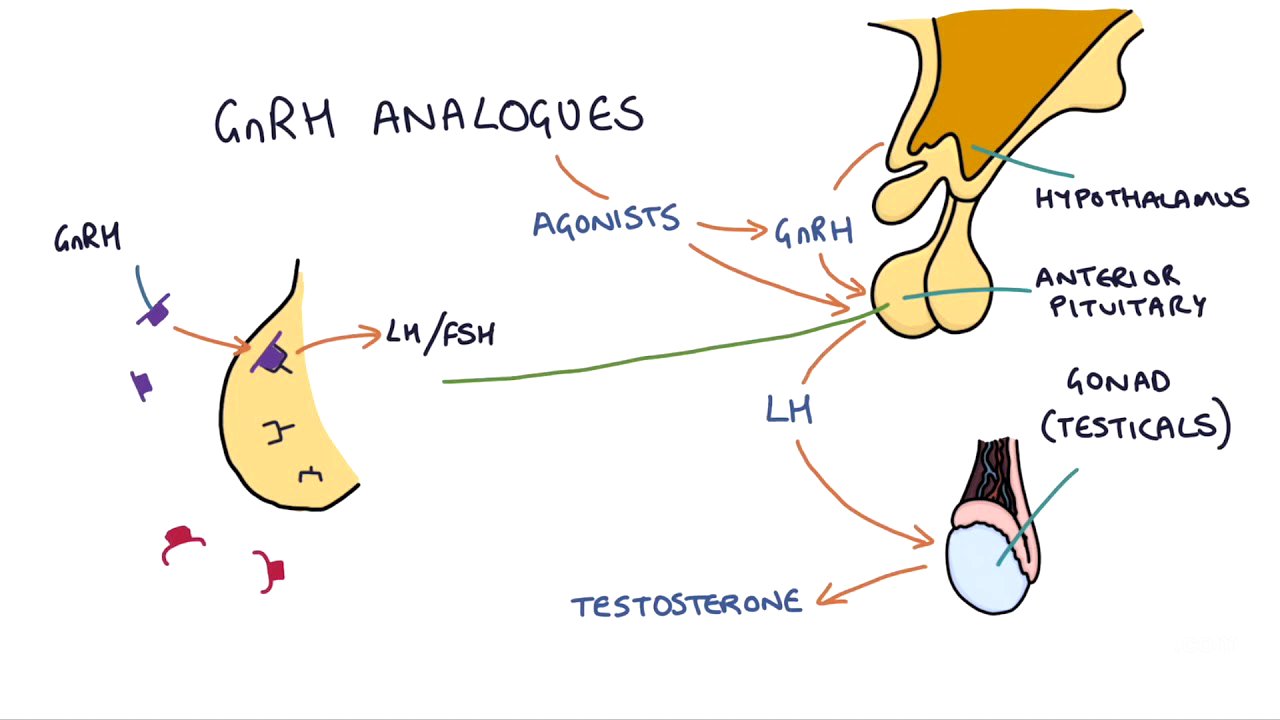TLDR;
This video explains how GnRH analogs work to suppress the production of sex hormones, such as estrogen and testosterone, by affecting the hypothalamic-pituitary-gonadal axis. It describes how these medications, initially causing a flare-up of hormone production, ultimately lead to a desensitization of the pituitary gland, reducing hormone output.
- GnRH analogs are used to treat conditions like prostate cancer and endometriosis by reducing sex hormone production.
- Examples of GnRH analogs include goserelin (Zoladex) and leuprorelin (Prostap).
- The medications initially cause a surge in LH and FSH, leading to a temporary increase in sex hormones, followed by a desensitization of the pituitary gland and a reduction in hormone production.
Introduction to GnRH Analogs [0:04]
The video introduces GnRH analogs and their use in suppressing the production of sex hormones to treat conditions like prostate cancer and endometriosis. These conditions rely on sex hormones to develop and produce symptoms, making GnRH analogs an effective treatment option. Examples of GnRH analogs include goserelin (brand name Zoladex) and leuprorelin (brand name Prostap).
Understanding the Hypothalamic-Pituitary-Gonadal Axis [0:48]
To understand how GnRH analogs work, it's important to understand the hypothalamic-pituitary-gonadal axis. The hypothalamus produces gonadotropin-releasing hormone (GnRH), which stimulates the anterior pituitary gland to produce LH and FSH. In females, LH and FSH stimulate the development of follicles in the ovaries, which then release estrogen. Estrogen has a negative feedback effect on the hypothalamus and pituitary gland. In males, LH stimulates the testicles to produce testosterone, which also has a negative feedback effect on the hypothalamus and anterior pituitary gland.
Mechanism of Action of GnRH Analogs [1:56]
GnRH analogs are agonists of the GnRH receptors on the anterior pituitary gland. They bind to these receptors and stimulate the release of LH and FSH, similar to the natural GnRH hormone. However, these medications cause a much more powerful stimulation, leading to a large release of LH and FSH. This results in an initial flare of sex hormones, such as estrogen and testosterone, which can last from a few days to a few weeks. This initial surge can temporarily worsen symptoms of conditions like prostate cancer.
Long-Term Effects and Administration [3:14]
GnRH analogs are administered via subcutaneous or intramuscular injection, slowly releasing the hormone into the body over a period of one to three months, depending on the dose. Continuous stimulation of the GnRH receptors leads to desensitization of these receptors on the anterior pituitary gland. Over time, the pituitary gland reduces its production of LH and FSH, leading to a reduction in estrogen or testosterone production, resulting in hypogonadotropic hypogonadism. The effects of GnRH analogs wear off over time, and the pituitary gland becomes more sensitized to GnRH again. Therefore, repeated doses are necessary to maintain the desired effects.


![Unang Balita sa Unang Hirit (Part 1): SEPTEMBER 30, 2025 [HD]](https://wm-img.halpindev.com/p-briefread_c-10_b-10/urlb/aHR0cDovL2ltZy55b3V0dWJlLmNvbS92aS9idDhGZ1RrcklqTS9ocWRlZmF1bHQuanBn.jpg)






